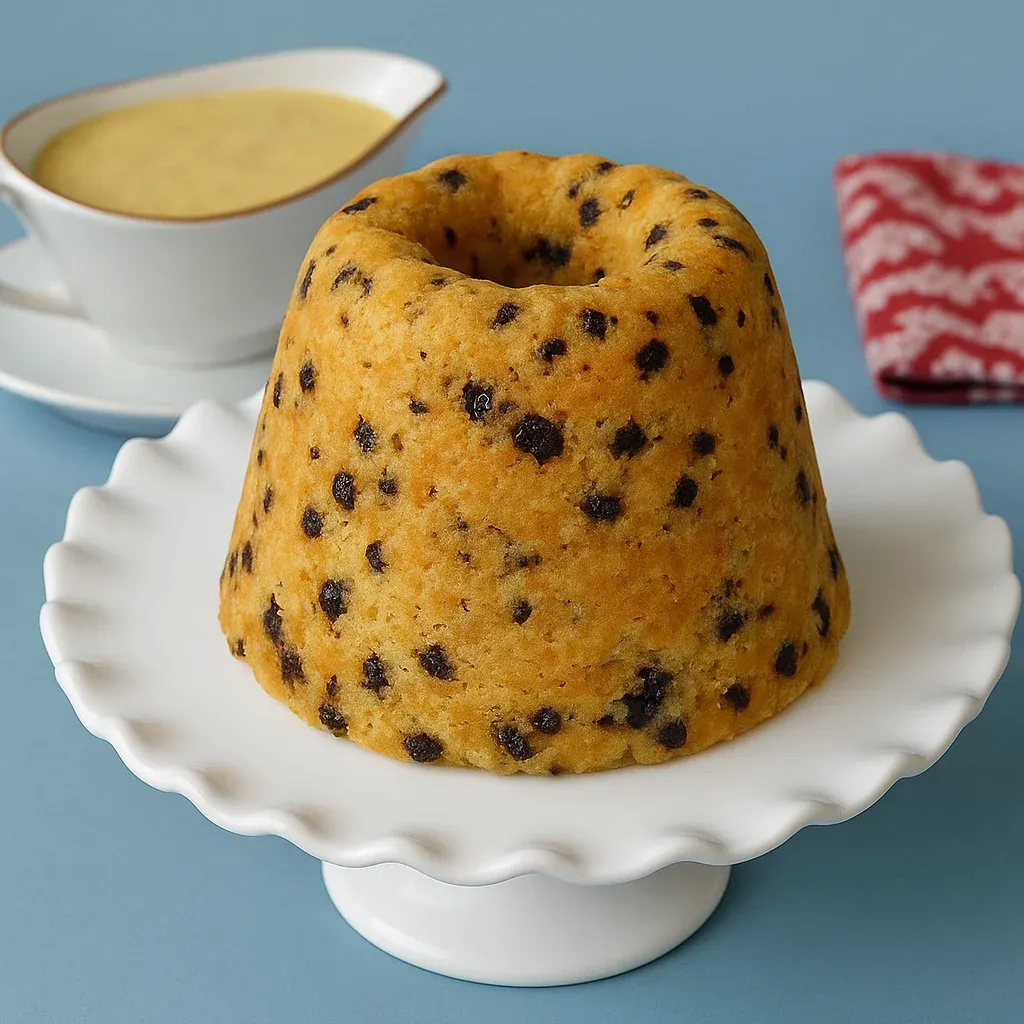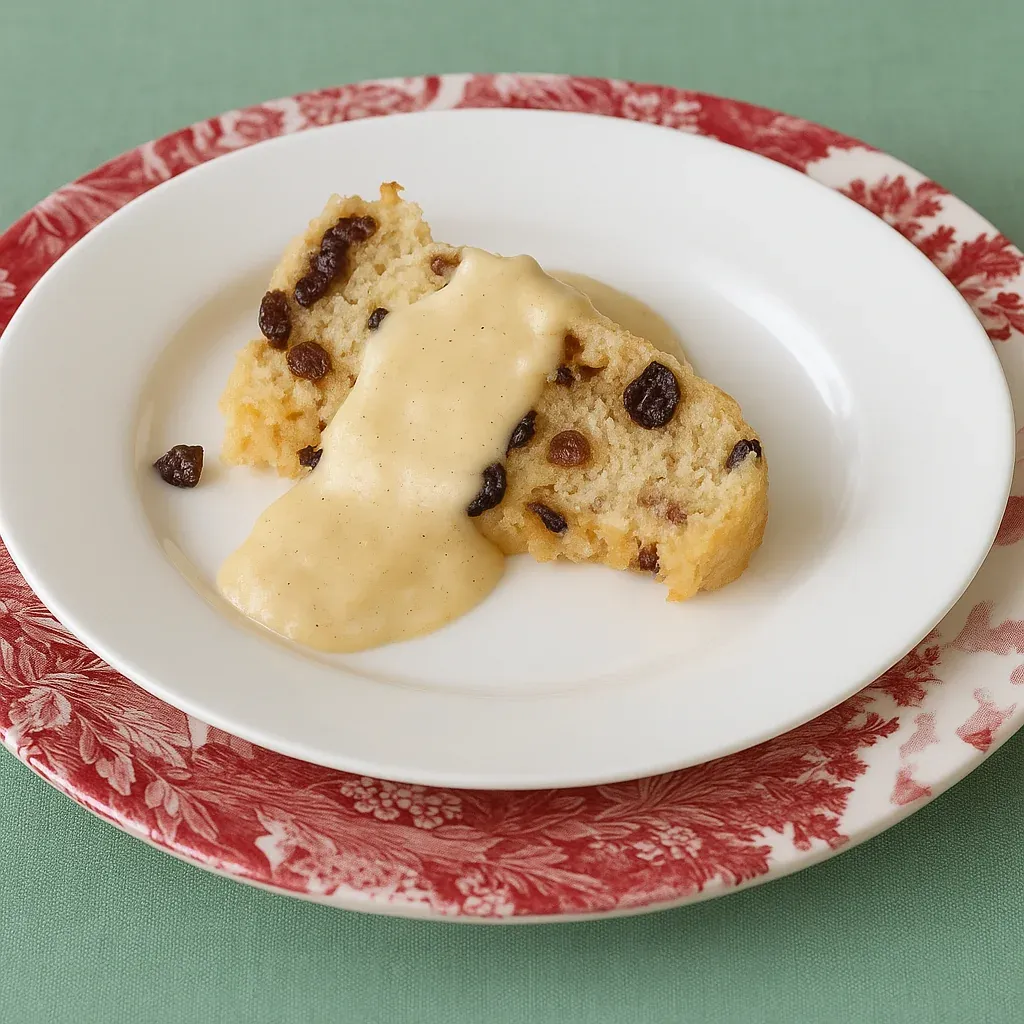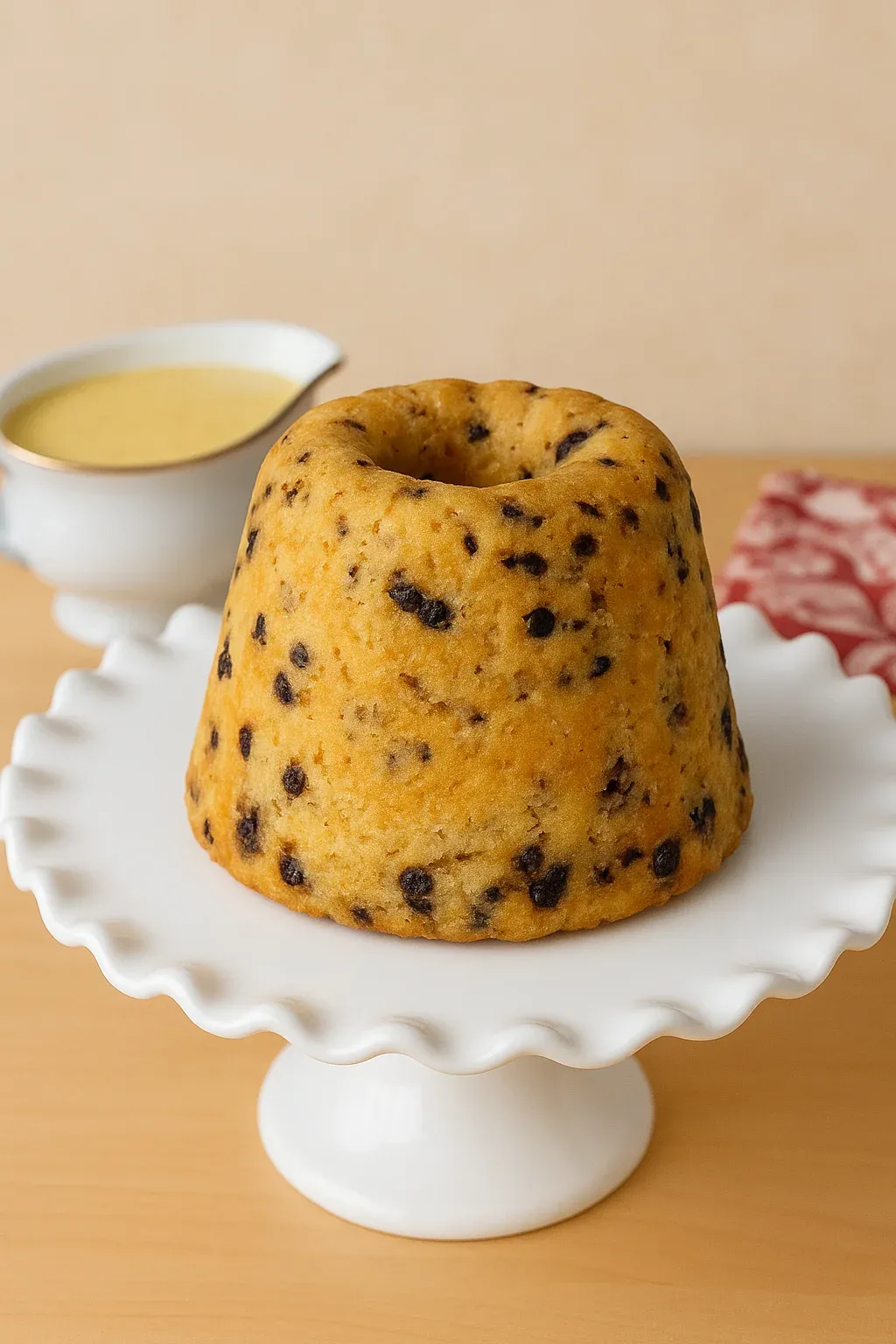 Pin it
Pin it
This Old-Fashioned Spotted Dick has been in my family for many years, hitting just the right sweet spot with basic ingredients that turn into a super cozy British treat that always brings joy to our dinner table.
I tried making this for the first time during a freezing winter night after my grandma handed down her old handwritten recipe to me. The sweet smell that filled up my kitchen took me straight back to those Sunday lunches I had as a kid in England, and now it's what everyone asks me to bring to holiday parties.
Ingredients
- All Purpose Flour: Makes up the base of our pudding and creates that soft, tender bite. Try to grab unbleached flour for a bit more flavor
- Baking Powder: Gives you that fluffy, bouncy texture. Just make sure yours isn't old or it won't work right
- Salt: Cuts through the sweetness and makes other flavors pop. Regular kosher salt works great
- Beef Suet: Adds that old-school richness that makes a real Spotted Dick. You can find it at British food shops or swap in ice-cold grated butter if needed
- Caster Sugar: Adds sweetness without being heavy. Don't worry if you only have regular sugar though
- Dried Currants: These little guys make the famous "spots" and add sweet bursts throughout. Pick plump ones without extra oils
- Milk: Pulls everything together and adds moisture. Whole milk tastes best here
- Vanilla Extract: Adds warm background flavor. The real stuff tastes way better than fake
- Lemon Zest: Gives a fresh pop to the whole dessert. Try to use organic lemons when you can
- English Custard Sauce: Pours over the top for that creamy finish. Store-bought is fine but homemade is amazing
Step-by-Step Instructions
- Set Up Your Steamer:
- Put some metal cookie cutters or a folded dishcloth in the bottom of a big pot. This little trick makes space under your pudding mold so it doesn't burn and lets steam move around properly. Add about 3 inches of water and heat until it's simmering. While that's happening, grease your 1.6-liter pudding mold really well so the pudding won't stick later.
- Combine Dry Stuff:
- Throw flour, sugar, baking powder, salt and suet in your food processor. Give it a few pulses until it looks like damp sand with tiny bits of fat scattered throughout. This texture is what makes the pudding so light and tender. Dump everything into a big mixing bowl and don't forget to scrape down the sides.
- Mix in Wet Ingredients and Fruit:
- Add your milk, lemon zest, vanilla, and currants. Stir it all together with a wooden spoon using easy, thorough strokes until you get a thick, even batter with no dry spots. Your batter should be firm enough to hold its shape but soft enough to spoon into the mold without trouble.
- Load Up the Mold:
- Spoon your batter into the greased mold, pushing down lightly to get rid of air bubbles and make the top even. Leave about half an inch of space at the top since it'll grow while cooking. Put the lid on tight to keep water from getting in during steaming.
- Steam It:
- Lower your sealed mold carefully into the gently bubbling water, making sure the water comes halfway up the sides. Turn down the heat so it's just simmering, not boiling hard. With suet, you'll need to steam it for 3-4 hours, checking the water every half hour and adding more boiling water when needed. If you used butter instead, it'll only take about 90 minutes.
- Give It a Break:
- Take the mold out of the pot with oven mitts or tongs and set it on a cooling rack. Let it sit untouched for exactly 15 minutes, which helps the pudding settle before you turn it out. This waiting step really helps the texture and keeps it from falling apart.
- Dish It Up:
- Flip the pudding onto a warm plate after loosening the edges with a butter knife if needed. If you prepped it right, it should drop out with a nice thud. Cut into thick slices and serve right away with warm custard sauce drizzled all over each piece, letting it soak into the warm pudding a bit.
 Pin it
Pin it
My grandma always said the type of suet you use changes everything about this pudding. She'd go to her butcher just to ask for fresh beef suet that she'd grate by hand instead of using the packaged stuff. I can still picture her hands working fast while she told me stories about making this dessert during wartime when they couldn't get many ingredients, and how special it was when they could find everything they needed.
Historical Context
Spotted Dick showed up in British kitchens during Victorian times, around the mid-1800s, when steamed puddings got popular because they used ingredients wisely and didn't need an oven. The name probably comes from "dick" being a local word for pudding, and "spotted" because of all the fruit bits inside. It started out as a simple dessert for working folks but soon everybody loved it, no matter how rich or poor. Using suet made sense back then since they didn't have refrigerators. These days, this pudding reminds people of their roots and connects them to British food traditions.
 Pin it
Pin it
Storage and Reheating
Spotted Dick stays good for quite a while after you make it. Just wrap any leftovers tightly and keep them in the fridge for up to 5 days. The flavors actually get better after a day or two. To warm it up again, you can cut single portions and pop them in the microwave for 30-45 seconds, or put the whole pudding back in its mold and steam it for 30 minutes until it's hot. You can also wrap pieces in foil and warm them in the oven at 300°F for about 15 minutes. Always add fresh warm custard when serving instead of reheating pudding that already has custard on it. You can even freeze this dessert for up to three months. Just let it thaw in the fridge overnight before warming it up.
Ingredient Substitutions
The classic ingredients make the most authentic version, but you can still get great results with some swaps. If you can't find beef suet, just grate very cold butter using the big holes on your cheese grater. For vegans, vegetable suet works too. Don't have currants? Try raisins, golden raisins, or even dried cranberries for something different. Need a dairy-free option? Almond or oat milk work just fine. Got gluten issues? Baking-type gluten-free flour mixes can replace regular flour, though your pudding might be a bit denser. Want it extra rich? Use half milk and half heavy cream. Whatever changes you make, just keep the same ratio of wet to dry stuff so the texture turns out right.
Frequently Asked Questions
- → What goes into making Spotted Dick?
This pudding combines suet (or butter), flour, sugar, baking powder, dried currants, milk, salt, lemon zest, and vanilla. The currants are the 'spots' everyone knows about.
- → How’s Spotted Dick typically served?
Usually served hot, it’s topped with a creamy custard sauce that adds richness to its fluffy, tangy flavor.
- → Can butter replace suet in the dish?
You can swap suet for butter, though suet makes the texture lighter and gives the dish a more classic feel.
- → How long is the steaming process?
Steam it 3-4 hours for suet-made versions. If using butter, about 90 minutes will do it just right.
- → Can I try different ingredients in Spotted Dick?
Absolutely! Raisins or sultanas can stand in for currants, or add a pinch of cinnamon or nutmeg for warmth.
- → How do I store any leftovers?
Keep leftovers in the fridge in an airtight container for three days. Reheat gently in a microwave or steamer before enjoying again.
